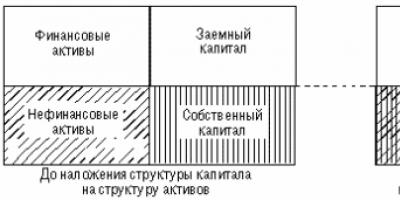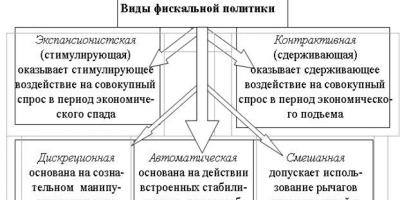2.5 Vieta formula for polynomials (equations) of higher degrees
The formulas derived by Viète for quadratic equations are also true for polynomials of higher degrees.
Let the polynomial
P(x) = a 0 x n + a 1 x n -1 + … +a n
Has n different roots x 1, x 2..., x n.
In this case, it has a factorization of the form:
a 0 x n + a 1 x n-1 +…+ a n = a 0 (x – x 1)(x – x 2)…(x – x n)
Let's divide both sides of this equality by a 0 ≠ 0 and open the brackets in the first part. We get the equality:
x n + ()x n -1 + … + () = x n – (x 1 + x 2 + … + x n) x n -1 + (x 1 x 2 + x 2 x 3 + … + x n -1 x n)x n - 2 + … +(-1) n x 1 x 2 … x n
But two polynomials are identically equal if and only if the coefficients of the same powers are equal. It follows that the equality
x 1 + x 2 + … + x n = -
x 1 x 2 + x 2 x 3 + … + x n -1 x n =
x 1 x 2 … x n = (-1) n
For example, for polynomials of third degree
a 0 x³ + a 1 x² + a 2 x + a 3
We have identities
x 1 + x 2 + x 3 = -
x 1 x 2 + x 1 x 3 + x 2 x 3 =
x 1 x 2 x 3 = -
As for quadratic equations, this formula is called Vieta's formulas. The left-hand sides of these formulas are symmetric polynomials from the roots x 1, x 2 ..., x n of this equation, and the right-hand sides are expressed through the coefficient of the polynomial.
2.6 Equations reducible to quadratic (biquadratic)
Equations of the fourth degree are reduced to quadratic equations:
ax 4 + bx 2 + c = 0,
called biquadratic, and a ≠ 0.
It is enough to put x 2 = y in this equation, therefore,
ay² + by + c = 0
let's find the roots of the resulting quadratic equation
y 1,2 = ![]()
To immediately find the roots x 1, x 2, x 3, x 4, replace y with x and get
x² = ![]()
x 1,2,3,4 =  .
.
If a fourth degree equation has x 1, then it also has a root x 2 = -x 1,
If has x 3, then x 4 = - x 3. The sum of the roots of such an equation is zero.
2x 4 - 9x² + 4 = 0
Let's substitute the equation into the formula for the roots of biquadratic equations:
x 1,2,3,4 = ![]() ,
,
knowing that x 1 = -x 2, and x 3 = -x 4, then:
x 3.4 = ![]()
Answer: x 1.2 = ±2; x 1.2 =
2.7 Study of biquadratic equations
Let's take the biquadratic equation
ax 4 + bx 2 + c = 0,
where a, b, c are real numbers, and a > 0. By introducing the auxiliary unknown y = x², we examine the roots of this equation and enter the results into the table (see Appendix No. 1)
2.8 Cardano formula
If we use modern symbolism, the derivation of the Cardano formula can look like this:
x = 
This formula determines the roots of a general third-degree equation:
ax 3 + 3bx 2 + 3cx + d = 0.
This formula is very cumbersome and complex (it contains several complex radicals). It will not always apply, because... very difficult to fill out.





F ¢(xо) = 0, >0 (<0), то точка xоявляется точкой локального минимума (максимума) функции f(x). Если же =0, то нужно либо пользоваться первым достаточным условием, либо привлекать высшие производные. На отрезке функция y = f(x) может достигать наименьшего или наибольшего значения либо в критических точках, либо на концах отрезка . Пример 3.22. Найти экстремумы функции f(x) ...

List or select the most interesting places from 2-3 texts. Thus, we have examined the general provisions for creating and conducting elective courses, which will be taken into account when developing an elective course in algebra for grade 9 “Quadratic equations and inequalities with a parameter.” Chapter II. Methodology for conducting the elective course “Quadratic equations and inequalities with a parameter” 1.1. Are common...
Solutions from numerical calculation methods. To determine the roots of an equation, knowledge of the theories of Abel, Galois, Lie, etc. groups and the use of special mathematical terminology: rings, fields, ideals, isomorphisms, etc. are not required. To solve an algebraic equation of the nth degree, you only need the ability to solve quadratic equations and extract roots from a complex number. Roots can be determined by...





With units of measurement of physical quantities in the MathCAD system? 11. Describe in detail the text, graphic and mathematical blocks. Lecture No. 2. Linear algebra problems and solving differential equations in the MathCAD environment In linear algebra problems, there is almost always a need to perform various operations with matrices. The operator panel with matrices is located on the Math panel. ...
Municipal budgetary educational institution
“Secondary school No. 64”, Bryansk
City scientific and practical conference
"First steps into science"
Research work
"Viete's theorem for equations of the third and fourth degree"
Mathematics
Completed by: 11b grade student
Shanov Ilya Alekseevich
Scientific adviser:
mathematic teacher,
Candidate of Physics and Mathematics sciences
Bykov Sergey Valentinovich
Bryansk 2012
Introduction………………………………………………………………………………… 3
Goals and objectives ……………………………………………………… 4
Brief historical background ………………………………………… 4
Quadratic equation …………………………………………………. 5
Cubic equation……………………………………………………………. 6
Equation of the fourth degree ………………………………………… 7
Practical part………………………………………………………. 9
References…………………………………………………… 12
Appendix …………………………………………………………… 13
Introduction
The Fundamental Theorem of Algebra states that a field is algebraically closed, in other words, that equations of degree n with complex coefficients (in general) over the field have exactly n complex roots. Equations of the third degree are solved by Cordano's formula. Fourth degree equations using the Ferrari method. In addition, it has been proven in algebra theory that if  is the root of the equation, then
is the root of the equation, then  is also the root of this equation. For a cubic equation, the following cases are possible:
is also the root of this equation. For a cubic equation, the following cases are possible:
all three roots are real;
two roots are complex, one is real.
It follows that any cubic equation has at least one real root.
For a fourth degree equation:
All four roots are different.
Two roots are real, two are complex.
All four roots are complex.
This work is devoted to a thorough study of Vieta’s theorem: its formulation, proof, as well as solving problems using this theorem.
The work done is aimed at helping 11th grade students who are about to take the Unified State Exam, as well as for young mathematicians who are interested in simpler and more effective methods of solutions in various areas of mathematics.
In the appendix to this work, a collection of problems is provided for independent solving and consolidation of new material that I have studied.
This issue cannot be ignored, since it is important for mathematics, both for science in general and for students and those interested in solving such problems.
Goals and objectives of the work:
Obtain an analogue of Vieta's theorem for a third-degree equation.
Prove an analogue of Vieta's theorem for an equation of third degree.
Obtain an analogue of Vieta's theorem for an equation of fourth degree.
Prove an analogue of Vieta's theorem for an equation of fourth degree.
Make sure that the application of this theorem is practical.
Consider the application of these questions to solving practical problems.
Deepen mathematical knowledge in the field of solving equations.
Develop an interest in mathematics.
Brief historical background
Rightfully worthy to be sung in poetry
On the properties of roots VIETTE'S THEOREM...
FRANCOIS VIET (1540-1603) - French mathematician. A lawyer by profession. In 1591, he introduced letter designations not only for unknown quantities, but also for coefficients of equations; thanks to this, it became possible for the first time to express the properties of equations and their roots by general formulas. He was responsible for establishing a uniform method for solving equations of the 2nd, 3rd and 4th degrees. Among the discoveries, Viète himself especially highly valued the establishment of the relationship between the roots and coefficients of equations. For the approximate solution of equations with numerical coefficients, Vieth proposed a method similar to Newton's later method. In trigonometry, François Viète gave a complete solution to the problem of determining all the elements of a flat or spherical triangle from three data, and found important expansions of cos nx and sin nx in powers of cos X and sin X. He considered infinite works for the first time. Vieta's works were written in difficult language and therefore received less distribution in their time than they deserved .
Quadratic equation
To begin with, let us recall Vieta’s formulas for equations of the second degree, which we learned in the school curriculum.
T 

 Vieta's theoremfor quadratic equation (8th grade)
Vieta's theoremfor quadratic equation (8th grade)
E  if and are the roots of a quadratic equation then
if and are the roots of a quadratic equation then
that is, the sum of the roots of the reduced quadratic equation is equal to the second coefficient taken with the opposite sign, and the product of the roots is equal to the free term.
Also, remember the theorem, inverse of Vieta's theorem:
If the numbers - p And q are such that

then and are the roots of the equation
Vieta's theorem is remarkable in that, without knowing the roots of the square trinomial, we can easily calculate their sum and product, that is, the simplest symmetric expressions.
Vieta's theorem allows you to guess the whole roots of a square trinomial.
Cubic equation
Now let's move on directly to the formulation and solution of the cubic equation using Vieta's theorem.
Formulation
TO  The ubiquitous equation is a third order equation of the form
The ubiquitous equation is a third order equation of the form
Where a ≠ 0.
If a = 1, then the equation is called a reduced cubic equation:
So, we need to prove that for the equation
the following theorem is true:
P  find the roots of this equation, then
find the roots of this equation, then
Proof
Let's imagine a polynomial
let's perform the transformations:
So, we get that
Twopolynomials are equal if and only if their coefficients at the corresponding powers are equal.
It means that
Q.E.D.
Now consider the theorem, inverse of Vieta's theorem for a third degree equation.
F  formulation
formulation
E  if the numbers are such that
if the numbers are such that
Fourth degree equation
Now let's move on to setting up and solving a fourth-degree equation using Vieta's theorem for a fourth-degree equation.
Formulation
U  equation of the fourth degree - an equation of the form
equation of the fourth degree - an equation of the form
G  de a ≠ 0.
de a ≠ 0.
E  if a = 1, then the equation is called reduced
if a = 1, then the equation is called reduced
AND  so, let us prove that for the equation
so, let us prove that for the equation
With  the following theorem is true: let the roots of the given equation, then
the following theorem is true: let the roots of the given equation, then
Proof
Let's imagine a polynomial
let's perform the transformations:
So, we get that
We know that two polynomials are equal if and only if their coefficients at the corresponding powers are equal.
It means that
Q.E.D.
Consider the theorem, inverse of Vieta's theorem for a fourth-degree equation.
Formulation
If the numbers are such that

then these numbers are the roots of the equation
Practical part
Now let's look at solutions to problems using Vieta's theorems for equations of the third and fourth degree.
Task No. 1

Answer: 4, -4.
Task No. 2

Answer: 16, 24.
To solve these equations, we can use Cardano’s formulas and Ferrari’s method, respectively, but using Vieta’s theorem, we know the sum and product of the roots of these equations.
Task No. 3
Create an equation of the third degree if it is known that the sum of the roots is 6, the paired product of the roots is 3, and the product is -4.

Let's make an equation, we get
Task No. 4
Write an equation of the third degree if it is known that the sum of the roots is equal to 8 , the pair product of the roots is equal to 4 , triple the product is equal to 12 , and the product 20 .
Solution: using Vieta’s formula, we get

Let's make an equation, we get
Using Vieta's theorem, we easily composed equations using their roots. This is the most rational way to solve these problems.
Problem #5

where a, b, c are Heron’s formulas.
Let's open the brackets and transform the expression, we get
Z  Note that the radical expression is cubic expression. Let us use Vieta’s theorem for the corresponding cubic equation, then we have that
Note that the radical expression is cubic expression. Let us use Vieta’s theorem for the corresponding cubic equation, then we have that
Z 
 Knowing that we get:
Knowing that we get:

From the solution to this problem it is clear that Vieta's theorem is applicable to problems from different areas of mathematics.
Conclusion
In this paper, a method for solving equations of the third and fourth degrees using Vieta’s theorem was investigated. The formulas derived in the work are easy to use. During the course of the study, it became obvious that in some cases this method is more effective than the Cordano formula and the Ferrari method for equations of the third and fourth degrees, respectively.
Vieta's theorem was applied in practice. A number of problems were solved that helped to better consolidate the new material.
This study was very interesting and educational for me. Having deepened my knowledge in mathematics, I discovered a lot of interesting things and enjoyed this research.
But my research in the field of solving equations is not over. In the future, I plan to study the solution of an nth degree equation using Vieta's theorem.
I would like to express my deep gratitude to my supervisor, Candidate of Physical and Mathematical Sciences, for the opportunity of such an unusual research and constant attention in my work.
Bibliography
Vinogradov I.M. Mathematical encyclopedia. M., 1977.
V. B. Lidsky, L. V. Ovsyannikov, A. N. Tulaikov, M. I. Shabunin. Problems in elementary mathematics, Fizmatlit, 1980.
Scientific research work in mathematics
Research... Scientifically – researchJob By mathematics Geometry... theorem Poncelet For triangle... r2 - degree or... arc third smaller holes... the equation, giving fourth ... mathematician F. Viet I calculated in 1579 with 9 digits. Dutch mathematician ...
... For equationthird And fourthdegrees mathematicians researchwork. The best scientists in France...
A Brief Essay on the History of Mathematics, 5th Edition, Revised
Book... For many later textbooks on algeora. In it the presentation is brought to theory equationthird And fourthdegrees... theoretical and applied mathematicians. Attention was paid to both teaching and researchwork. The best scientists in France...
There are a number of relationships in quadratic equations. The main ones are the relationships between roots and coefficients. Also in quadratic equations there are a number of relationships that are given by Vieta’s theorem.
In this topic, we will present Vieta’s theorem itself and its proof for a quadratic equation, the theorem inverse to Vieta’s theorem, and analyze a number of examples of solving problems. In the material we will pay special attention to the consideration of Vieta’s formulas, which define the connection between the real roots of an algebraic equation of degree n and its coefficients.
Yandex.RTB R-A-339285-1
Formulation and proof of Vieta's theorem
Formula for the roots of a quadratic equation a x 2 + b x + c = 0 of the form x 1 = - b + D 2 · a, x 2 = - b - D 2 · a, where D = b 2 − 4 a c, establishes relationships x 1 + x 2 = - b a, x 1 x 2 = c a. This is confirmed by Vieta's theorem.
Theorem 1
In a quadratic equation a x 2 + b x + c = 0, Where x 1 And x 2– roots, the sum of the roots will be equal to the ratio of the coefficients b And a, which was taken with the opposite sign, and the product of the roots will be equal to the ratio of the coefficients c And a, i.e. x 1 + x 2 = - b a, x 1 x 2 = c a.
Evidence 1
We offer you the following scheme for carrying out the proof: take the formula of roots, compose the sum and product of the roots of the quadratic equation and then transform the resulting expressions in order to make sure that they are equal - b a And c a respectively.
Let's make the sum of the roots x 1 + x 2 = - b + D 2 · a + - b - D 2 · a. Let's bring the fractions to a common denominator - b + D 2 · a + - b - D 2 · a = - b + D + - b - D 2 · a. Let's open the parentheses in the numerator of the resulting fraction and present similar terms: - b + D + - b - D 2 · a = - b + D - b - D 2 · a = - 2 · b 2 · a . Let's reduce the fraction by: 2 - b a = - b a.
This is how we proved the first relation of Vieta’s theorem, which relates to the sum of the roots of a quadratic equation.
Now let's move on to the second relationship.
To do this, we need to compose the product of the roots of the quadratic equation: x 1 · x 2 = - b + D 2 · a · - b - D 2 · a.
Let's remember the rule for multiplying fractions and write the last product as follows: - b + D · - b - D 4 · a 2.
Let's multiply a bracket by a bracket in the numerator of the fraction, or use the difference of squares formula to transform this product faster: - b + D · - b - D 4 · a 2 = - b 2 - D 2 4 · a 2 .
Let's use the definition of a square root to make the following transition: - b 2 - D 2 4 · a 2 = b 2 - D 4 · a 2 . Formula D = b 2 − 4 a c corresponds to the discriminant of a quadratic equation, therefore, into a fraction instead of D can be substituted b 2 − 4 a c:
b 2 - D 4 a 2 = b 2 - (b 2 - 4 a c) 4 a 2
Let's open the brackets, add similar terms and get: 4 · a · c 4 · a 2 . If we shorten it to 4 a, then what remains is c a . This is how we proved the second relation of Vieta’s theorem for the product of roots.
The proof of Vieta's theorem can be written in a very laconic form if we omit the explanations:
x 1 + x 2 = - b + D 2 a + - b - D 2 a = - b + D + - b - D 2 a = - 2 b 2 a = - b a , x 1 x 2 = - b + D 2 · a · - b - D 2 · a = - b + D · - b - D 4 · a 2 = - b 2 - D 2 4 · a 2 = b 2 - D 4 · a 2 = = D = b 2 - 4 · a · c = b 2 - b 2 - 4 · a · c 4 · a 2 = 4 · a · c 4 · a 2 = c a .
When the discriminant of a quadratic equation is equal to zero, the equation will have only one root. To be able to apply Vieta's theorem to such an equation, we can assume that the equation, with a discriminant equal to zero, has two identical roots. Indeed, when D=0 the root of the quadratic equation is: - b 2 · a, then x 1 + x 2 = - b 2 · a + - b 2 · a = - b + (- b) 2 · a = - 2 · b 2 · a = - b a and x 1 · x 2 = - b 2 · a · - b 2 · a = - b · - b 4 · a 2 = b 2 4 · a 2 , and since D = 0, that is, b 2 - 4 · a · c = 0, whence b 2 = 4 · a · c, then b 2 4 · a 2 = 4 · a · c 4 · a 2 = c a.
Most often in practice, Vieta's theorem is applied to the reduced quadratic equation of the form x 2 + p x + q = 0, where the leading coefficient a is equal to 1. In this regard, Vieta’s theorem is formulated specifically for equations of this type. This does not limit the generality due to the fact that any quadratic equation can be replaced by an equivalent equation. To do this, you need to divide both of its parts by a number a different from zero.
Let us give another formulation of Vieta's theorem.
Theorem 2
Sum of roots in the given quadratic equation x 2 + p x + q = 0 will be equal to the coefficient of x, which is taken with the opposite sign, the product of the roots will be equal to the free term, i.e. x 1 + x 2 = − p, x 1 x 2 = q.
Theorem converse to Vieta's theorem
If you look carefully at the second formulation of Vieta’s theorem, you can see that for the roots x 1 And x 2 reduced quadratic equation x 2 + p x + q = 0 the following relations will be valid: x 1 + x 2 = − p, x 1 · x 2 = q. From these relations x 1 + x 2 = − p, x 1 x 2 = q it follows that x 1 And x 2 are the roots of the quadratic equation x 2 + p x + q = 0. So we come to a statement that is the converse of Vieta’s theorem.
We now propose to formalize this statement as a theorem and carry out its proof.
Theorem 3
If the numbers x 1 And x 2 are such that x 1 + x 2 = − p And x 1 x 2 = q, That x 1 And x 2 are the roots of the reduced quadratic equation x 2 + p x + q = 0.
Evidence 2
Replacing odds p And q to their expression through x 1 And x 2 allows you to transform the equation x 2 + p x + q = 0 into an equivalent .
If we substitute the number into the resulting equation x 1 instead of x, then we get the equality x 1 2 − (x 1 + x 2) x 1 + x 1 x 2 = 0. This is equality for any x 1 And x 2 turns into a true numerical equality 0 = 0 , because x 1 2 − (x 1 + x 2) x 1 + x 1 x 2 = x 1 2 − x 1 2 − x 2 x 1 + x 1 x 2 = 0. It means that x 1- root of the equation x 2 − (x 1 + x 2) x + x 1 x 2 = 0, So what x 1 is also the root of the equivalent equation x 2 + p x + q = 0.
Substitution into equation x 2 − (x 1 + x 2) x + x 1 x 2 = 0 numbers x 2 instead of x allows us to obtain equality x 2 2 − (x 1 + x 2) x 2 + x 1 x 2 = 0. This equality can be considered true, since x 2 2 − (x 1 + x 2) x 2 + x 1 x 2 = x 2 2 − x 1 x 2 − x 2 2 + x 1 x 2 = 0. It turns out that x 2 is the root of the equation x 2 − (x 1 + x 2) x + x 1 x 2 = 0, and hence the equations x 2 + p x + q = 0.
The converse of Vieta's theorem has been proven.
Examples of using Vieta's theorem
Let's now begin to analyze the most typical examples on the topic. Let's start by analyzing problems that require the application of the theorem inverse to Vieta's theorem. It can be used to check numbers produced by calculations to see if they are the roots of a given quadratic equation. To do this, you need to calculate their sum and difference, and then check the validity of the relations x 1 + x 2 = - b a, x 1 · x 2 = a c.
The fulfillment of both relations indicates that the numbers obtained during the calculations are the roots of the equation. If we see that at least one of the conditions is not met, then these numbers cannot be the roots of the quadratic equation given in the problem statement.
Example 1
Which of the pairs of numbers 1) x 1 = − 5, x 2 = 3, or 2) x 1 = 1 - 3, x 2 = 3 + 3, or 3) x 1 = 2 + 7 2, x 2 = 2 - 7 2 is a pair of roots of a quadratic equation 4 x 2 − 16 x + 9 = 0?
Solution
Let's find the coefficients of the quadratic equation 4 x 2 − 16 x + 9 = 0. This is a = 4, b = − 16, c = 9. According to Vieta's theorem, the sum of the roots of a quadratic equation must be equal to - b a, that is, 16 4 = 4 , and the product of the roots must be equal c a, that is, 9 4 .
Let's check the obtained numbers by calculating the sum and product of numbers from three given pairs and comparing them with the obtained values.
In the first case x 1 + x 2 = − 5 + 3 = − 2. This value is different from 4, therefore, the check does not need to be continued. According to the theorem converse to Vieta's theorem, we can immediately conclude that the first pair of numbers are not the roots of this quadratic equation.
In the second case, x 1 + x 2 = 1 - 3 + 3 + 3 = 4. We see that the first condition is met. But the second condition is not: x 1 · x 2 = 1 - 3 · 3 + 3 = 3 + 3 - 3 · 3 - 3 = - 2 · 3. The value we got is different from 9 4 . This means that the second pair of numbers are not the roots of the quadratic equation.
Let's move on to consider the third pair. Here x 1 + x 2 = 2 + 7 2 + 2 - 7 2 = 4 and x 1 x 2 = 2 + 7 2 2 - 7 2 = 2 2 - 7 2 2 = 4 - 7 4 = 16 4 - 7 4 = 9 4. Both conditions are met, which means that x 1 And x 2 are the roots of a given quadratic equation.
Answer: x 1 = 2 + 7 2 , x 2 = 2 - 7 2
We can also use the converse of Vieta's theorem to find the roots of a quadratic equation. The simplest way is to select integer roots of the given quadratic equations with integer coefficients. Other options can be considered. But this can significantly complicate calculations.
To select roots, we use the fact that if the sum of two numbers is equal to the second coefficient of a quadratic equation, taken with a minus sign, and the product of these numbers is equal to the free term, then these numbers are the roots of this quadratic equation.
Example 2
As an example, we use the quadratic equation x 2 − 5 x + 6 = 0. Numbers x 1 And x 2 can be the roots of this equation if two equalities are satisfied x 1 + x 2 = 5 And x 1 x 2 = 6. Let's select these numbers. These are numbers 2 and 3, since 2 + 3 = 5 And 2 3 = 6. It turns out that 2 and 3 are the roots of this quadratic equation.
The converse of Vieta's theorem can be used to find the second root when the first is known or obvious. To do this, we can use the relations x 1 + x 2 = - b a, x 1 · x 2 = c a.
Example 3
Consider the quadratic equation 512 x 2 − 509 x − 3 = 0. It is necessary to find the roots of this equation.
Solution
The first root of the equation is 1, since the sum of the coefficients of this quadratic equation is zero. It turns out that x 1 = 1.
Now let's find the second root. For this you can use the relation x 1 x 2 = c a. It turns out that 1 x 2 = − 3,512, where x 2 = - 3,512.
Answer: roots of the quadratic equation specified in the problem statement 1 And - 3 512 .
It is possible to select roots using the theorem inverse to Vieta’s theorem only in simple cases. In other cases, it is better to search using the formula for the roots of a quadratic equation through a discriminant.
Thanks to the converse of Vieta's theorem, we can also construct quadratic equations using the existing roots x 1 And x 2. To do this, we need to calculate the sum of the roots, which gives the coefficient for x with the opposite sign of the given quadratic equation, and the product of the roots, which gives the free term.
Example 4
Write a quadratic equation whose roots are numbers − 11 And 23 .
Solution
Let's assume that x 1 = − 11 And x 2 = 23. The sum and product of these numbers will be equal: x 1 + x 2 = 12 And x 1 x 2 = − 253. This means that the second coefficient is 12, the free term − 253.
Let's make an equation: x 2 − 12 x − 253 = 0.
Answer: x 2 − 12 x − 253 = 0 .
We can use Vieta's theorem to solve problems that involve the signs of the roots of quadratic equations. The connection between Vieta's theorem is related to the signs of the roots of the reduced quadratic equation x 2 + p x + q = 0 in the following way:
- if the quadratic equation has real roots and if the intercept term q is a positive number, then these roots will have the same sign “+” or “-”;
- if the quadratic equation has roots and if the intercept term q is a negative number, then one root will be “+”, and the second “-”.
Both of these statements are a consequence of the formula x 1 x 2 = q and rules for multiplying positive and negative numbers, as well as numbers with different signs.
Example 5
Are the roots of a quadratic equation x 2 − 64 x − 21 = 0 positive?
Solution
According to Vieta’s theorem, the roots of this equation cannot both be positive, since they must satisfy the equality x 1 x 2 = − 21. This is impossible with positive x 1 And x 2.
Answer: No
Example 6
At what parameter values r quadratic equation x 2 + (r + 2) x + r − 1 = 0 will have two real roots with different signs.
Solution
Let's start by finding the values of which r, for which the equation will have two roots. Let's find a discriminant and see at what r it will take positive values. D = (r + 2) 2 − 4 1 (r − 1) = r 2 + 4 r + 4 − 4 r + 4 = r 2 + 8. Expression value r 2 + 8 positive for any real r, therefore, the discriminant will be greater than zero for any real r. This means that the original quadratic equation will have two roots for any real values of the parameter r.
Now let's see when the roots have different signs. This is possible if their product is negative. According to Vieta's theorem, the product of the roots of the reduced quadratic equation is equal to the free term. This means that the correct solution will be those values r, for which the free term r − 1 is negative. Let's solve the linear inequality r − 1< 0 , получаем r < 1 .
Answer: at r< 1 .
Vieta formulas
There are a number of formulas that are applicable to carry out operations with the roots and coefficients of not only quadratic, but also cubic and other types of equations. They are called Vieta's formulas.
For an algebraic equation of degree n of the form a 0 · x n + a 1 · x n - 1 + . . . + a n - 1 x + a n = 0 the equation is considered to have n real roots x 1 , x 2 , … , x n, among which may be the same:
x 1 + x 2 + x 3 + . . . + x n = - a 1 a 0 , x 1 · x 2 + x 1 · x 3 + . . . + x n - 1 · x n = a 2 a 0 , x 1 · x 2 · x 3 + x 1 · x 2 · x 4 + . . . + x n - 2 · x n - 1 · x n = - a 3 a 0 , . . . x 1 · x 2 · x 3 · . . . · x n = (- 1) n · a n a 0
Definition 1
Vieta's formulas help us obtain:
- theorem on the decomposition of a polynomial into linear factors;
- determination of equal polynomials through the equality of all their corresponding coefficients.
Thus, the polynomial a 0 · x n + a 1 · x n - 1 + . . . + a n - 1 · x + a n and its expansion into linear factors of the form a 0 · (x - x 1) · (x - x 2) · . . . · (x - x n) are equal.
If we open the brackets in the last product and equate the corresponding coefficients, we obtain the Vieta formulas. Taking n = 2, we can obtain Vieta's formula for the quadratic equation: x 1 + x 2 = - a 1 a 0, x 1 · x 2 = a 2 a 0.
Definition 2
Vieta's formula for the cubic equation:
x 1 + x 2 + x 3 = - a 1 a 0 , x 1 x 2 + x 1 x 3 + x 2 x 3 = a 2 a 0 , x 1 x 2 x 3 = - a 3 a 0
The left side of the Vieta formula contains the so-called elementary symmetric polynomials.
If you notice an error in the text, please highlight it and press Ctrl+Enter
Vieta's theorem
Let and denote the roots of the reduced quadratic equation
(1)
.
Then the sum of the roots is equal to the coefficient of , taken with the opposite sign. The product of the roots is equal to the free term:
;
.
A note about multiple roots
If the discriminant of equation (1) is zero, then this equation has one root. But, in order to avoid cumbersome formulations, it is generally accepted that in this case, equation (1) has two multiple, or equal, roots:
.
Proof one
Let's find the roots of equation (1). To do this, apply the formula for the roots of a quadratic equation:
;
;
.
Find the sum of the roots:
.
To find the product, apply the formula:
.
Then
.
The theorem has been proven.
Proof two
If the numbers are the roots of the quadratic equation (1), then
.
Opening the parentheses.
.
Thus, equation (1) will take the form:
.
Comparing with (1) we find:
;
.
The theorem has been proven.
Vieta's converse theorem
Let there be arbitrary numbers. Then and are the roots of the quadratic equation
,
Where
(2)
;
(3)
.
Proof of Vieta's converse theorem
Consider the quadratic equation
(1)
.
We need to prove that if and , then and are the roots of equation (1).
Let's substitute (2) and (3) into (1):
.
We group the terms on the left side of the equation:
;
;
(4)
.
Let's substitute in (4):
;
.
Let's substitute in (4):
;
.
The equation holds. That is, the number is the root of equation (1).
The theorem has been proven.
Vieta's theorem for a complete quadratic equation
Now consider the complete quadratic equation
(5)
,
where , and are some numbers. Moreover.
Let's divide equation (5) by:
.
That is, we got the given equation
,
Where ; .
Then Vieta's theorem for a complete quadratic equation has the following form.
Let and denote the roots of the complete quadratic equation
.
Then the sum and product of the roots are determined by the formulas:
;
.
Vieta's theorem for cubic equation
In a similar way, we can establish connections between the roots of a cubic equation. Consider the cubic equation
(6)
,
where , , , are some numbers. Moreover.
Let's divide this equation by:
(7)
,
Where , , .
Let , , be the roots of equation (7) (and equation (6)). Then
.
Comparing with equation (7) we find:
;
;
.
Vieta's theorem for an equation of nth degree
In the same way, you can find connections between the roots , , ... , , for an equation of nth degree
.
Vieta's theorem for an equation of nth degree has the following form:
;
;
;
.
To obtain these formulas, we write the equation as follows:
.
Then we equate the coefficients for , , , ... , and compare the free term.
References:
I.N. Bronstein, K.A. Semendyaev, Handbook of mathematics for engineers and college students, “Lan”, 2009.
CM. Nikolsky, M.K. Potapov et al., Algebra: textbook for 8th grade in general education institutions, Moscow, Education, 2006.








